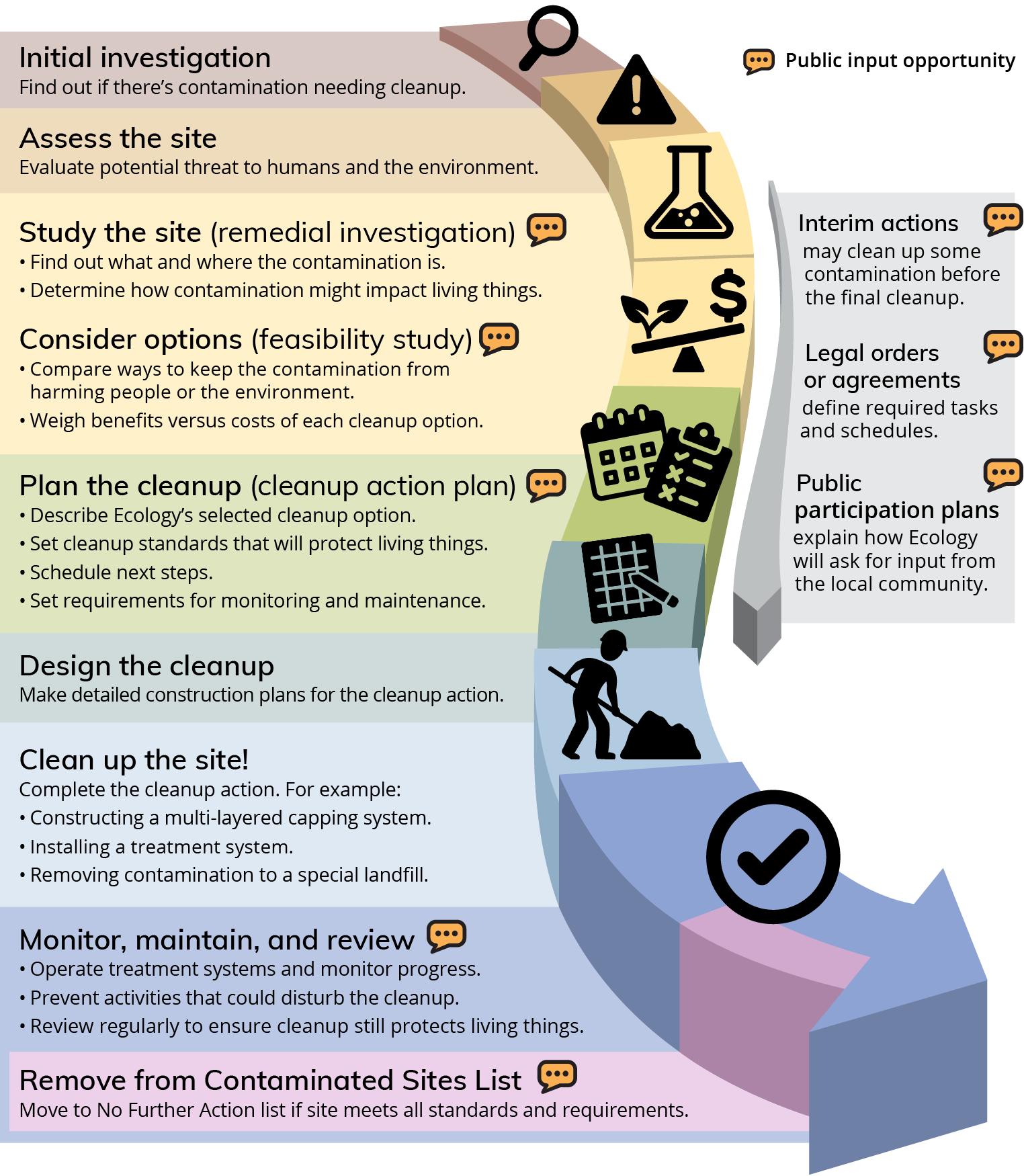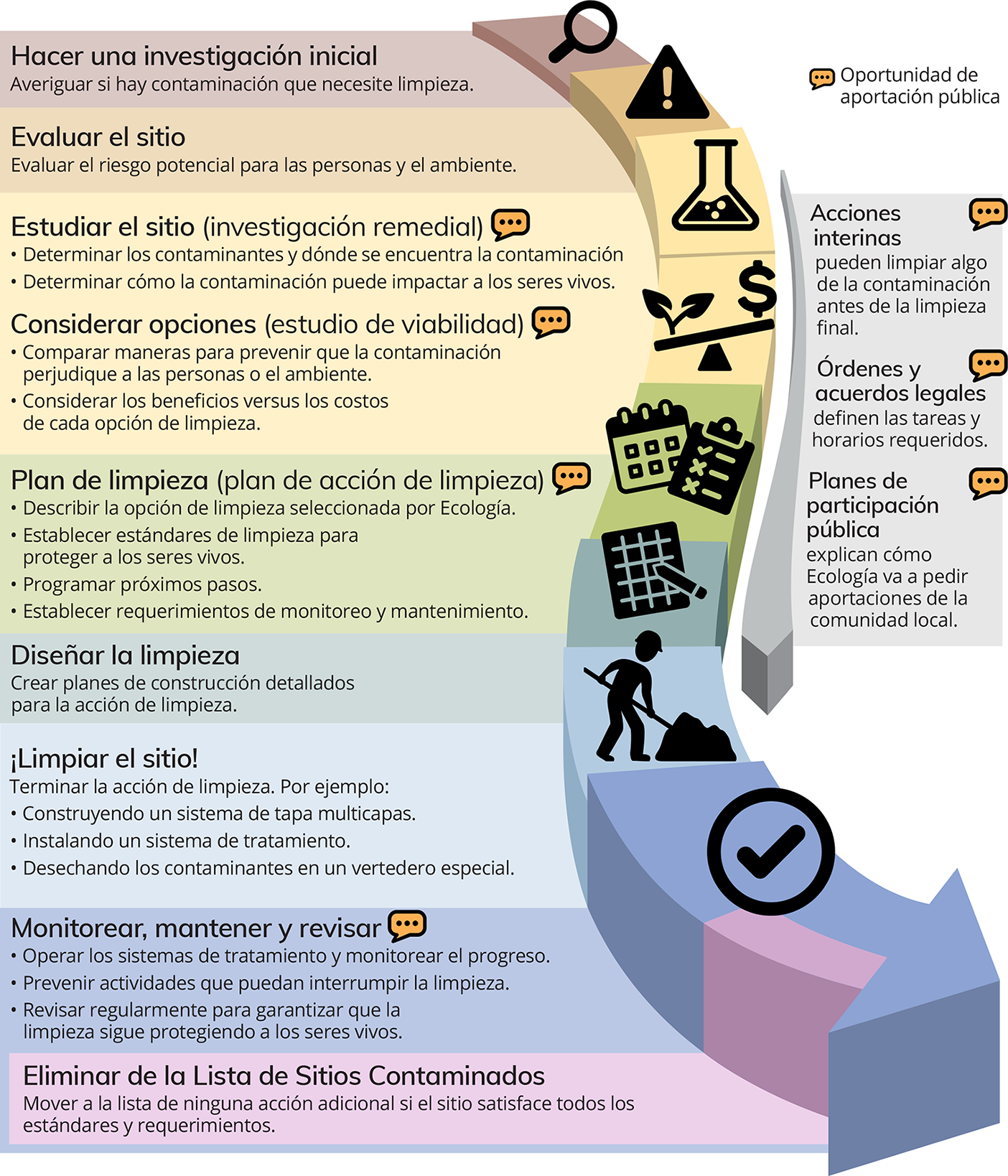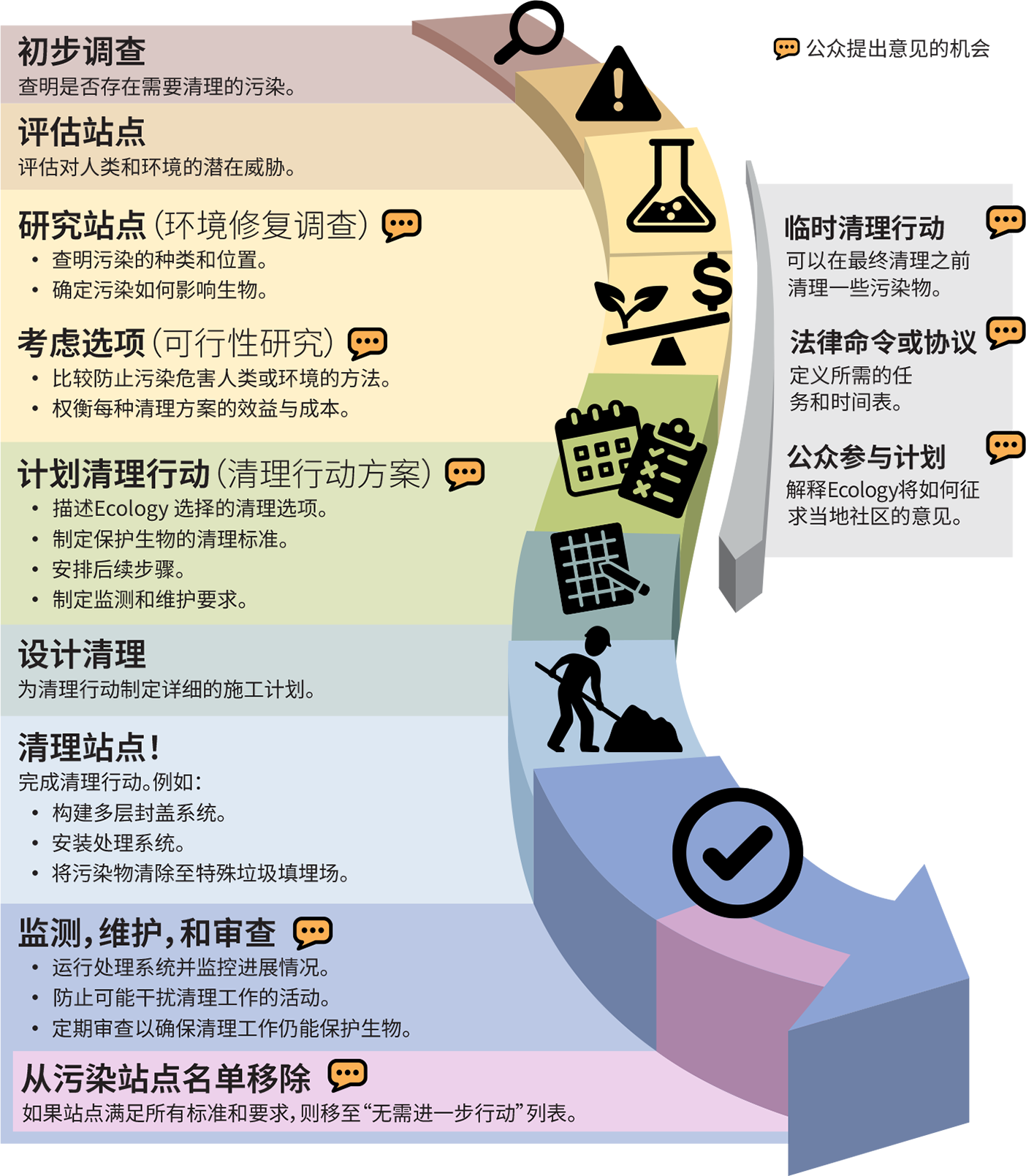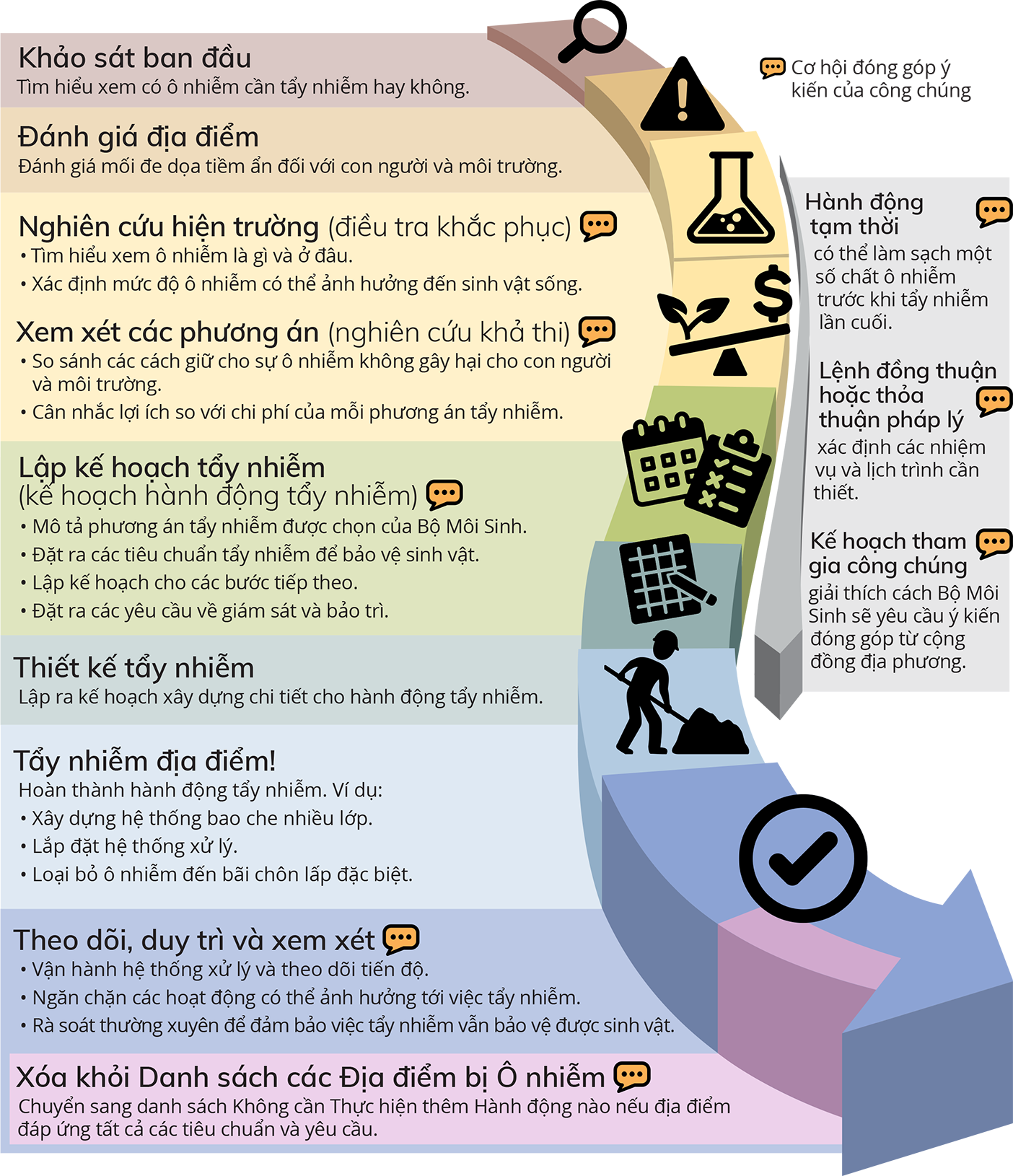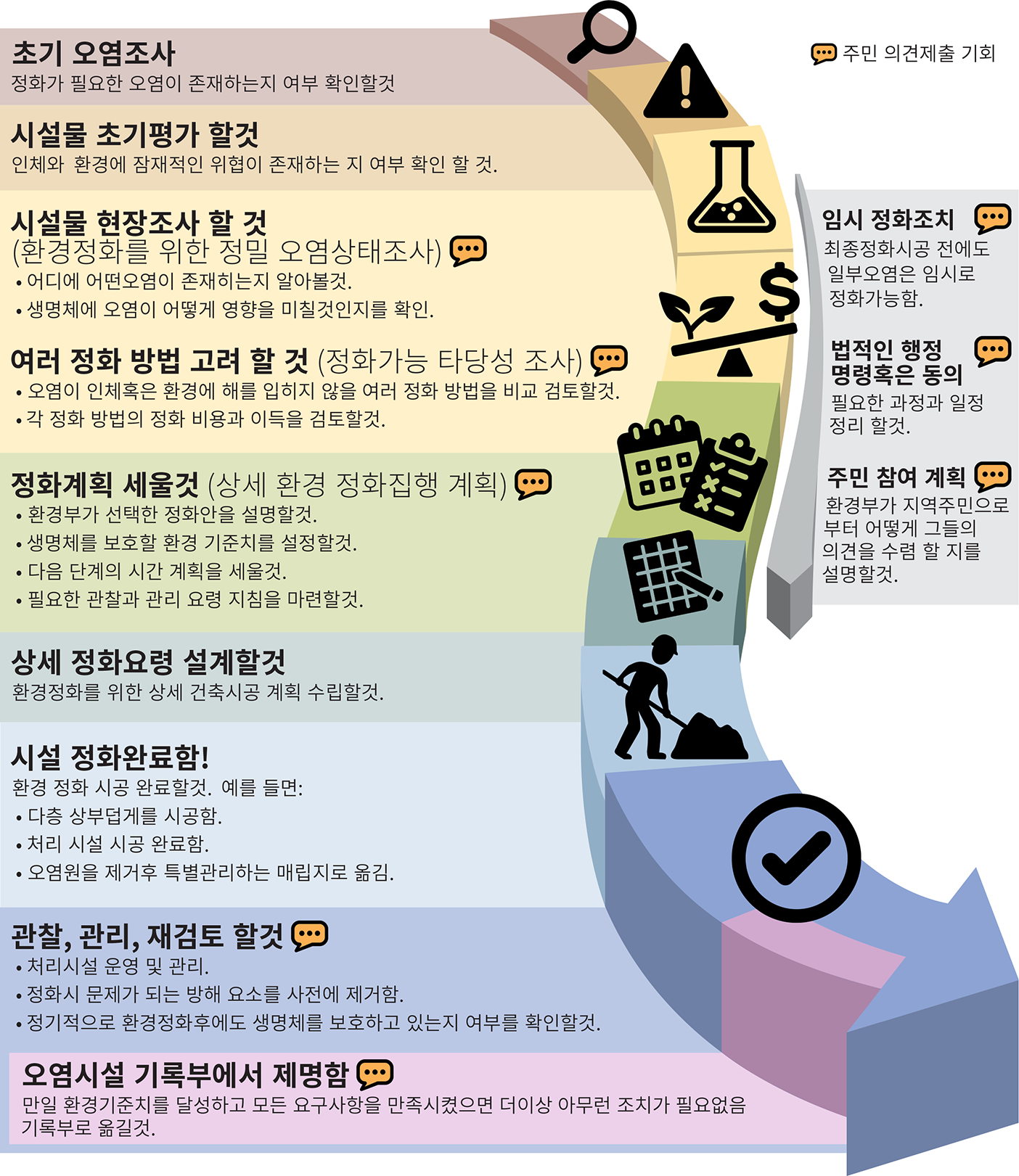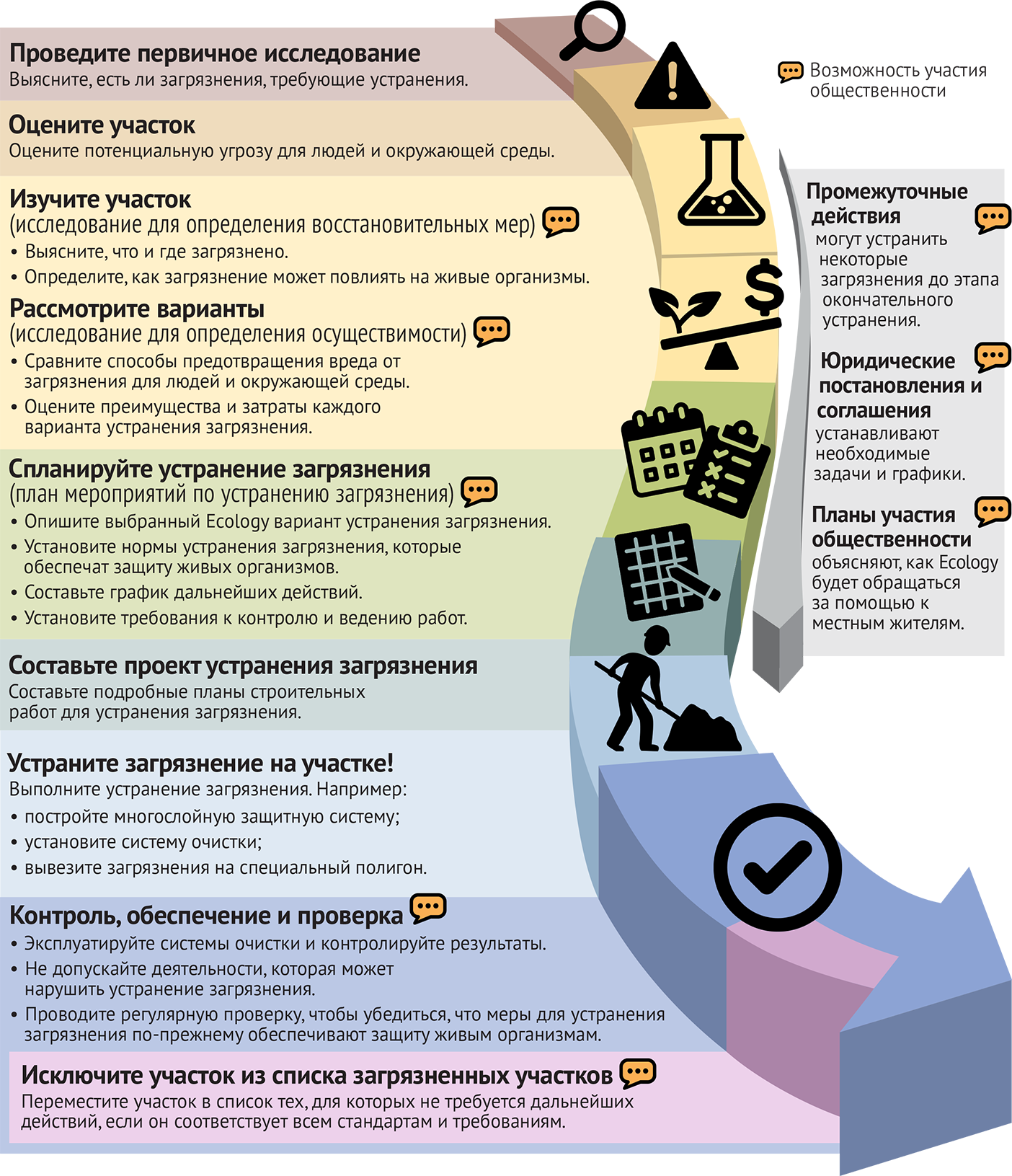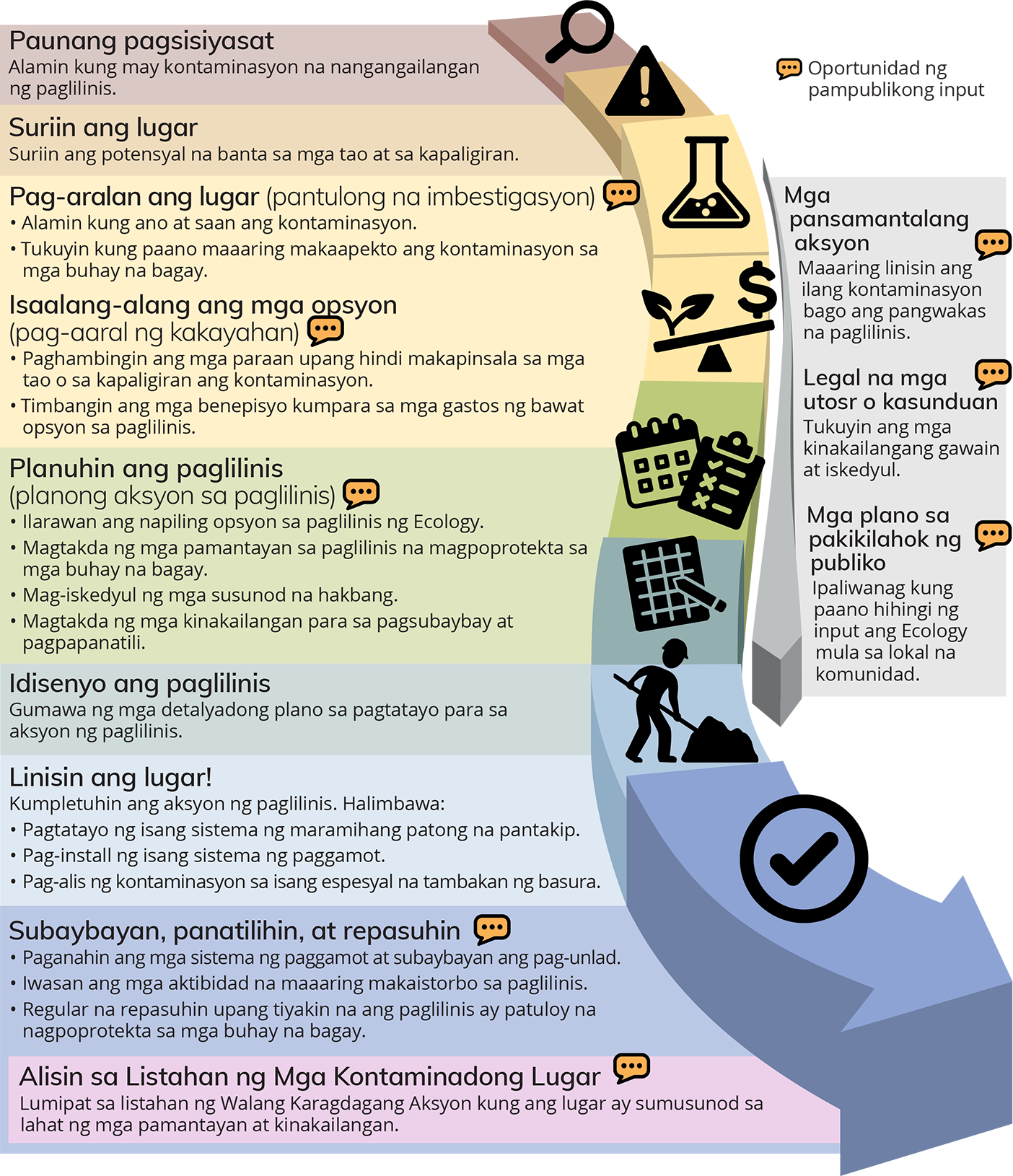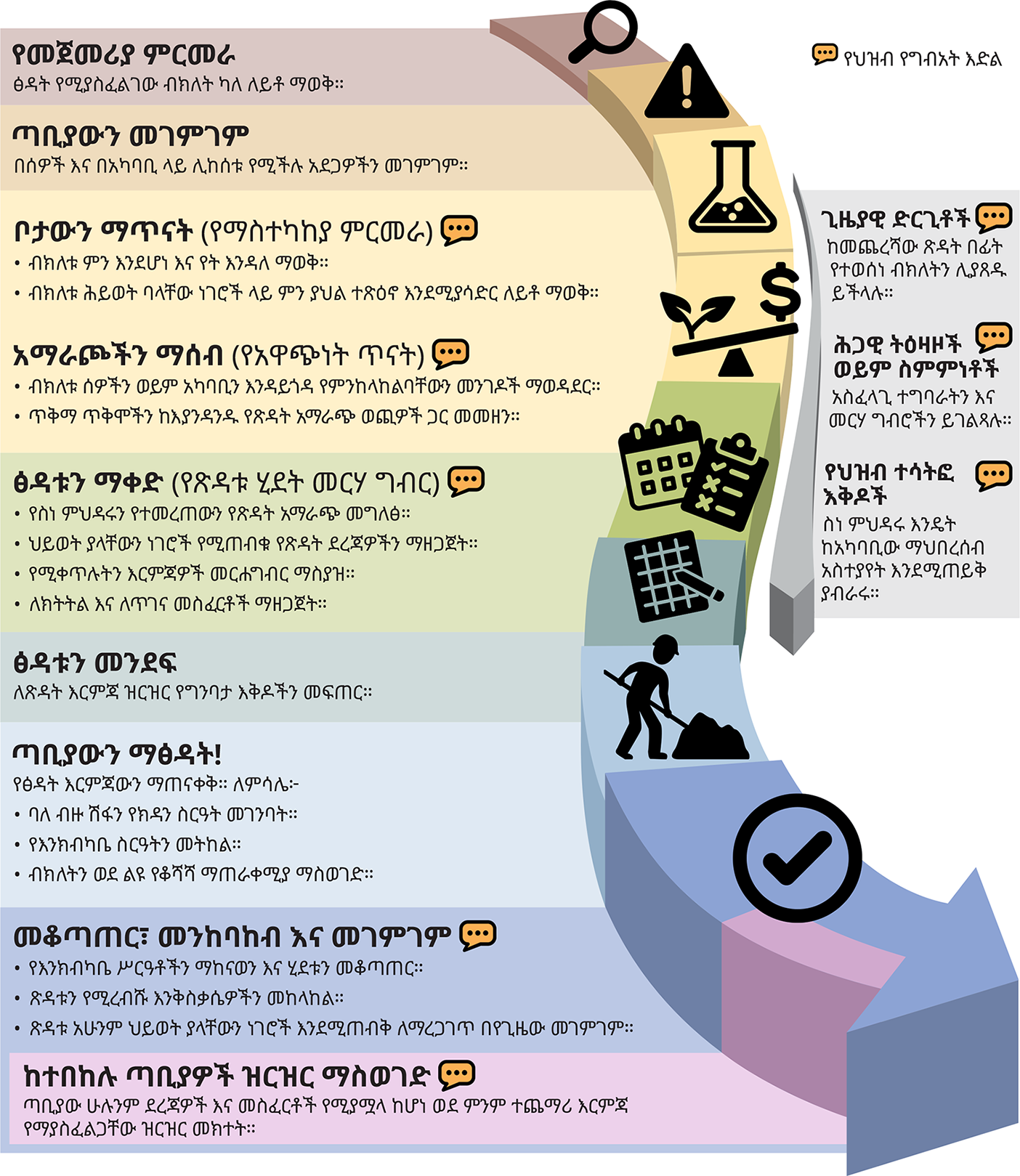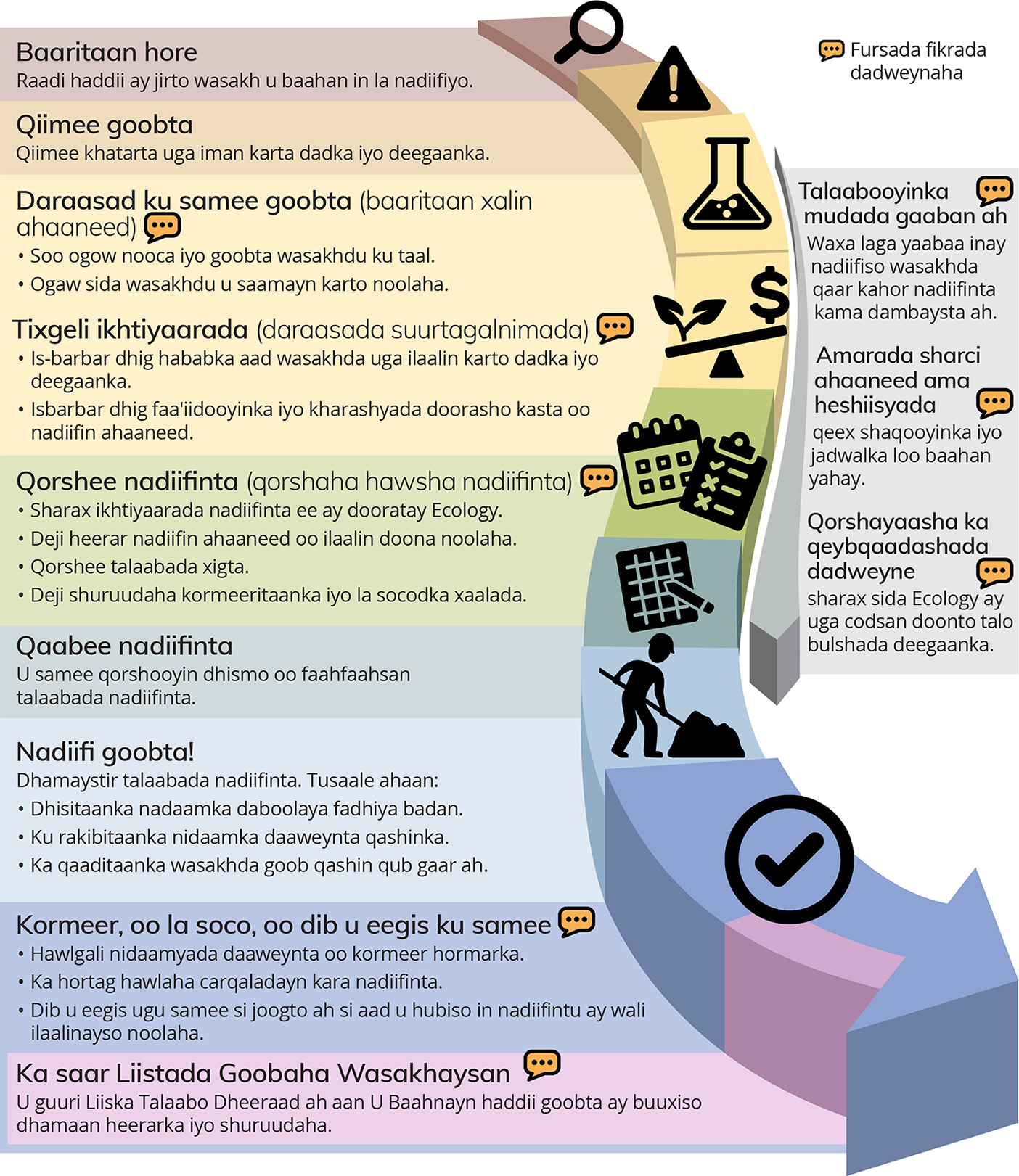How the cleanup process works
Cleaning up contamination can mean removing contaminated material from the site and storing it in a special landfill, treating it until it’s no longer harmful, or isolating it so it can’t affect human health or the environment. The cleanup process is defined in Washington’s environmental cleanup law.
Property owners can clean up independently or with our supervision. We also manage some cleanups directly. Cleanups we conduct or supervise are called formal cleanups. We follow the steps below and ask for public feedback at key points. Independent cleanups don’t have the same public participation requirements, but they must meet the same cleanup standards.
Steps in the MTCA cleanup process
Public participation plans and comment periods are only required for cleanups under a legal agreement with Ecology. Otherwise, all cleanups follow the same steps.
Download a PDF version of this infographic for print and screen-reader.
1. Discovery & initial investigation
Find a hazardous spill or suspect one happened in the past? Report it to us, and we’ll investigate and inform the property owners. Property owners might clean up minor spills at this stage. If they don’t, we add the site to our Contaminated Sites List.
2. Assess the site
We evaluate the potential risk the contamination poses to human health and the environment. We're currently working on a new process for assessing and rating sites.
When we supervise cleanups, we may issue an order or enter into a settlement agreement after completing a site hazard assessment.
3. Study the site and consider options
To clean up a site, we need to know what’s there. Remedial investigations collect environmental data to learn what chemicals are contaminating the site and where they are. Sometimes contamination can travel a long way from the initial leak or spill.
A feasibility study uses the results of the remedial investigation to explore different ways to clean up the contamination. A cleanup option might combine several different methods. The study evaluates several options to see if they keep contamination from harming people or the environment and meet all legal requirements, then weighs the benefits of each option against the costs.
4. Plan the cleanup
We consider public comments on the feasibility study and choose a preferred option for the cleanup action plan. The plan includes the schedule, standards, and requirements for every phase of the cleanup. It also explains why we chose the cleanup option.
We consider public comments before finalizing the cleanup action plan.
5. Design the cleanup
Cleanups are often very complex construction projects with many parts. This stage adds details about how exactly to construct, operate, maintain, and monitor the cleanup.
6. Clean up the site!
Cleanups are construction projects that follow the cleanup action plan. That might mean building a treatment facility for contaminated groundwater, digging up contaminated sediment and sending it to a hazardous waste landfill, or consolidating the contaminated soil and isolating it so living things aren’t exposed.
7. Monitor, maintain, and review
At times, some contamination is safely left at a site after cleanup construction is finished. Contaminated soil may be isolated underneath a building or cap, or a long-term treatment system may clean the groundwater. To keep the contamination isolated, we may restrict how these sites can be used. These restrictions are called institutional controls. An institutional control may prohibit installing drinking water wells or disturbing a protective cap that isolates contamination. The controls are usually listed in environmental covenants recorded with the county.
We review these sites about every five years to make sure the controls are still effective and the cleanup still protects living things from contamination. We share these reports for public comment.
8. Remove from the Contaminated Sites List
If a site meets all cleanup standards and requirements from the cleanup action plan, we move it from the Contaminated Sites List to the No Further Action List. We ask for public input first.
Law and policy about the cleanup process
Related links
Contact information
Policy & Technical Support Unit
360-407-7170


